War Above the Trenches: Caudron G.IV (Late)
The Aircraft
The Caudron G.IV was a French twin-engine biplane widely used during World War I as a reconnaissance/bomber aircraft. Its tailplanes were mounted on an open latticework structure normally associated with pusher aircraft, yet the engines and propellers were mounted to the front. This configuration set them apart from their pusher contemporaries, and the Germans tagged them with the nickname, Gitterrumpf , or "lattice tail."
It was designed by René and Gaston Caudron as an improvement over their single-engine Caudron G.III, and entered service with the French Aéronautique Militaire in November 1915 as first twin-engine aircraft in service in any numbers with the French.
It was manufactured in France, and in England and Italy under licence. There were three main versions, A2 for reconnaissance, B2 for bombing and E2 for training.
The British Royal Naval Air Service (RNAS) also used the G.IV as a bomber, receiving 55, of which twelve were built by the British Caudron company and the remainder supplied from France.
Numbers 4 and 5 Wing RNAS used the G.IV for attacks against German seaplane and airship bases in Belgium. It was finally replaced in RNAS service by the Handley Page O/100 aircraft in autumn 1917.
Italian G.IVs proved successful operating in the mountainous Alpine fronts, where its good altitude capabilities proved useful. The G.IV was also used by the Imperial Russian Air Force for reconnaissance purposes.
The Model
This is Copper State Models 1/48 version of the Caudron G.IV (Late), which is a superbly complex kit. The production standard is exceptional. I ran a WiP thread for this build, so I won't delve into the challenges of it here, but naturally you're welcome to review the thread: http://imodeler.com/groups/work-in-progress-aircraft/forum/topic/caudron-g-iv-late/
This project is modelled on C.1720 of Escadriller C202.
Copper State Models also produces a sea-version of the Caudron, the Hydravion, in 1/48 as well.
This is another of my projects championing lesser-known aircraft of the First World War, in quarter scale.
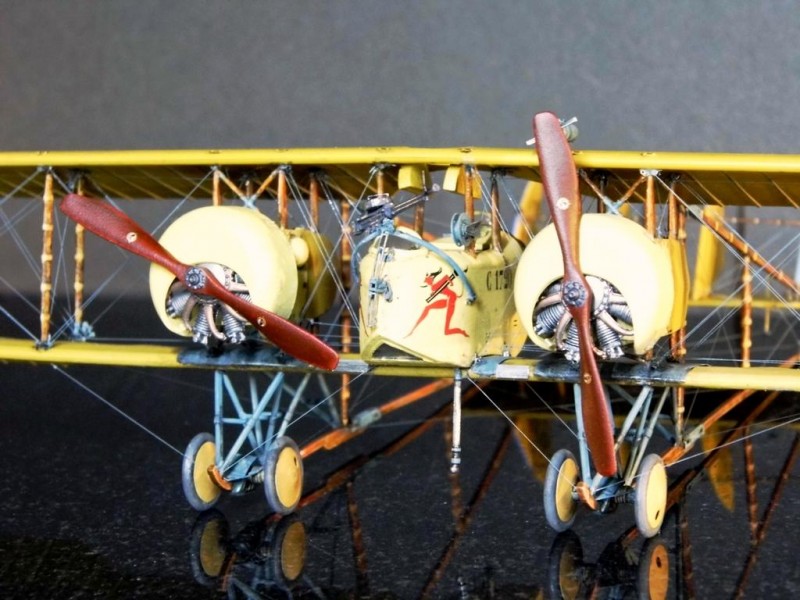
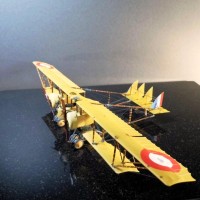
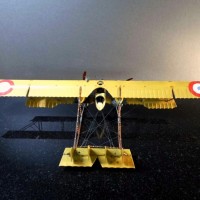

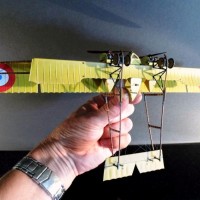
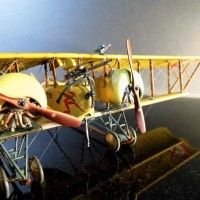
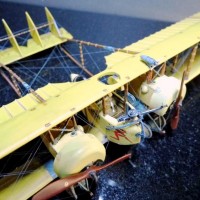
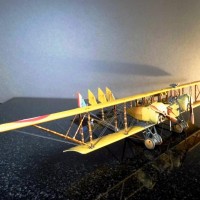
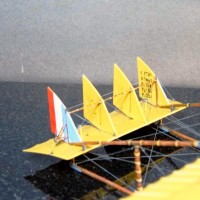
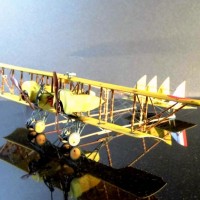
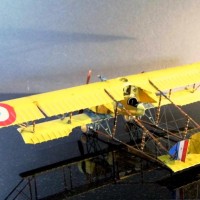
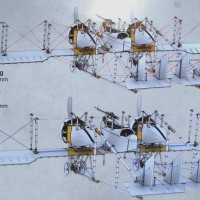
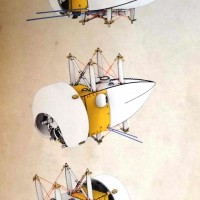
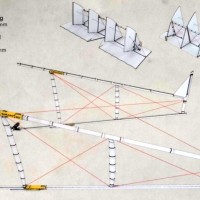
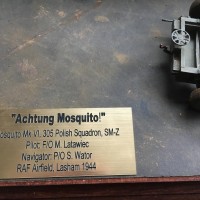
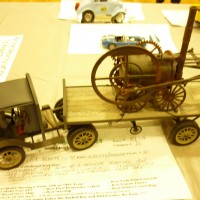

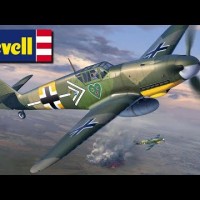
Rob, this is an incredible piece of work. I'd never seen one of these before looking at your WIP - and you have really brought it to life. It is more rigging than airframe! The PE is fantastic - you have handled it so well, this is a reference work. Thank you for teaching us! Absolutely awesome.
Thanks, Paul. You’re very kind. I think there was only one tiny piece of etch remaining at the end, and it was a spare. What a kit...
What a modeller, Rob.
Rob, this as to be one of the most complex kits around when it comes to rigging, yet your Caudron just looks so good that you make it achievable to any average modeller. I know I won’t dare build one, though the subject is indeed exotic and unique. Fantastic work my friend!
The key is thinking ahead, and not necessarily relying on the instructions in terms of sequencing. I think anyone who approaches the work methodically will do OK with it, but I wouldn’t recommend it to anyone without experience of WW1 modelling.
Thanks for the comment.
Superb build Rob. A real piece of work to be proud of. Well done!
Cheers, James.
Not sure how you dared to stick your fingers through all those lines to lift it. Outstanding build! Very French.
That’s turned out to be an issue, actually. There’s a small pinch point just at the back of the crew nacelle, but everywhere else has either tiny PE sprigs or rigging in the way.
Maybe they had this in mind when they once designed it, that it would turn out as a scale model. (Now, where the f..k could a modeller pinch it? Aha!) Looks like a flying harp.
I feel your model to be a huge inspiration. Maybe I will take another step towards my stash of WNWs without too much caution.
WnW twice the size lol, so caution to the wind...
Yeah, prolly have to anchor it properly.
Stunning result, Rob - you certainly have a talent there...and magic fingers. 🙂
Thanks, Craig.
This is a remarkable build, a true prize winner in my eyes. The level of detail is remarkable. Paint job is top notch! The rigging is a sight to behold. That has to be one of the most extensive rigging jobs I have ever seen. It rivals the rigging on a 3-masted schooner, or frigate, OMG its complex! I have never heard of this model company and I am very impressed with what I have seen in this build. The instructions seem very high-end and well done, Like WNW instructions. Need to try one of these models.
Paul, I'm pleased it piqued your interest. They have several WW1 subjects, all in 1/48, but they are releasing a 1/32 Nieuport later this year, I believe. I like their Whitworth, which now is released in a Premium edition with PE frets.
Thanks for the comment, and for looking in on the WiP thread.
I should add that the mechanism to the front of the crew nacelle, for raising/lowering the MG, also has a double run of rigging that starts and finishes either side of and just below the windscreen, but it’s almost impossible to see.
Rob, I am almost certain that the black and white photo my grandfather took of a biplane flying over a church sometime during his time in France was a G3 Caudron (you have to scroll down in the article to see it, but it's there; http://imodeler.com/2018/06/legacy-build-icm-135-model-t-great-war-ambulance/). After comparing the profiles of various WW1 aircraft, I am convinced this conclusion is correct because of the inordinate length of the upper wing compared to the lower, and the absence of a fuselage between the front of the aircraft and the rear control surfaces.
You've done a fantastic job with this model, and it is wonderful to see something like this in 1/48.
Thanks, David. As soon as I saw the image you posted I knew it was a Caudron, as I mentioned at the time, and I suspect, a rare image of it in flight. Thanks for posting the link again so others can confirm it, too.
Should add that the image in the photo is probably not a G.III as that was single engine and the tail plane and rudders were also different to the G.IV.
PS if you don’t mind I’ll tag that single photo and add it to the two archive photos here, for reference (Anyone reading this thread can see the source.).
Good show. Of course. (I missed your original comment.)
Wow, another museum quality build! All that rigging, amazing work.
Cheers, Robert.
Ditto to all the comments above, both to your evident skill and the final result. Just amazing.
Thanks, Greg.
Rob. This is top stuff. My hats off to you sir.
Thanks. An interesting project.
Man oh man Rob ! What a beauty...
When I saw the last photo I recognized it as the one David Thomas' Grandfather took. Well done indeed. This model compliments David's ambulance with the picture as the link between the two. Both are fantastic builds.
I have been following long with your work in progress. You completed this one in record time...
It belongs in a museum with your other builds accompanying it. You my friend are the master of rigging... I really like it a lot.
Thanks. I think I rigged everything and then some.
Liked. Twice if I could!
Excelled yourself here as far as I am concerned. A gorgeous build. Technically and creatively brilliant. Just sat poring over the photos for about 15 minutes. Well done, Rob.
Cheers, David.
Excellent, Rob. Everything is aligned perfectly. That’s quite a feat for a kit like this!
Cheers, John.
Amazing work. I have "experience of World War I modeling" and I wouldn't think of touching one of these kits, let alone proceeding further. ("a man's gotta know his limitations," or as my father put it, "the smart man knows where he's stupid.") Just really fantastic. I love it!
Thanks, Tom. Great comment.
Rob, this is a gorgeous piece of art. I like it a lot. Well Done !
Cheers, Terry.
Wondeful work,Rob, thank you !
Thanks, Christian.
Incredible piece of craftsmanship. You have great patience to create all that rigging. Bravo!
Beautiful work! Makes my eyes hurt looking at all the rigging! Wonder what it would have been like to rig the real aircraft? Someone had to think that one through pretty well! Cheers!
Thanks, Jeff. It’s one of the few models I kept from those days - in a case now. I also have the CSM ‘unbuildable’ Salmson-Moineau SM1.
Probably the two most difficult kits I ever came across.
I just saw someone has just posted a kit review of the Caudron as a new post - perhaps someone might want to link this original article as a reference...
2 attached images. Click to enlarge.